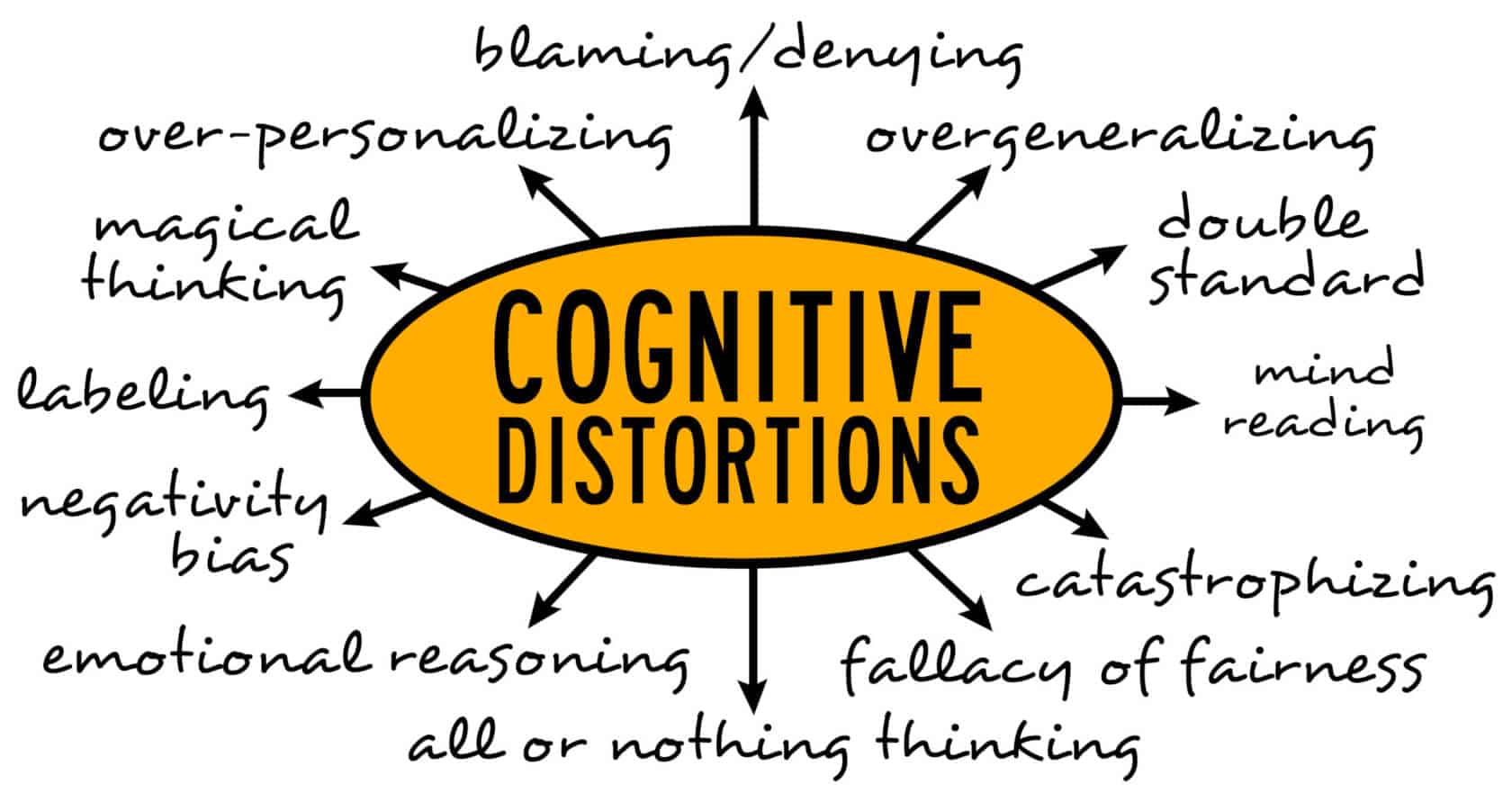From worrying about the little things to judging stereotypes, here is the world of cognitive distortions.
Recently, I’ve been having some weird and insecure thoughts whenever my sister is out late at night to walk our dog. I become worried, and I check up on her although rationally I know that I can’t keep being afraid that something bad is going to happen to her every time she goes out.
Anyhow, this thought started freaking me out a little bit because I tend to be a quite rational human being. So I did what everyone does – I googled the reasons why I am thinking this negatively so often.
Despite the fact and correlation that bad things are indeed happening to women and girls all around the world, I discovered that such thoughts are actually called Cognitive Distortions.
Turns out the cognitive distortions are thoughts created out of our unprocessed adverse experiences and thought patterns, and they combine with events or happenings that don’t necessarily end up causing what we think they will.
According to Positive Psychology, cognitive distortions are biased perspectives we take on ourselves and the world around us. They are irrational thoughts and beliefs that we unknowingly reinforce over time.
It is quite interesting to find out that there is a professional term for each of our ways of thinking. In my case, I thought the assumptions I used to make are delusional. Turns out delusion is a Cognitive Disorder whereas thoughts such as “I suck at everything” are categorized under cognitive distortions.
What Are The Types of Cognitive Distortions?
Our thoughts are diverse, dynamic and quite fast. If we give them the power, they have the capacity to break us or make us, so we should really get to know our thinking patterns more closely, and this is why we should also understand what sort of distorted thoughts we are having and why.
There are about 15 types of cognitive distortions. Here are some of the most known ones, of which I’m sure all of us are familiar:
- Black and White or Polarized Thinking;
- Overgeneralizing;
- Discounting the Positive;
- Mind Reading;
- Fortune Telling;
- Magnification (Catastrophising) and Minimising;
- Emotional Reasoning;
- Should Statements;
- Labelling and Mislabelling;
- Personalisation.
All of these have parallel statements that we think throughout the day. Examples of each can be thoughts like:
- “If I don’t succeed until I’m 25, I’m a failure” – Polarised Thinking
- “Everyone hates me” – Overgeneralizing
- “Good things never happen to me” – Discounting the Positive
- “I bet she thinks I’m a loser” – Mind Reading
- “I will never find love” – Fortune Telling
- “He must be cheating on me” – Emotional Reasoning
- “I should give her a call so she doesn’t think I’m heartless” – Should Statement
- “Obviously he is a junkie” – Labelling and Mislabelling
- “The party started being a bore as soon as I came in” – Personalisation
What To Do?
All of these thoughts have their own origin and we must learn how to master the art of not trusting them that much. In fact, this is the hardest of tasks – to differentiate real thoughts and facts from distorted ones that are biased from our negative experiences.
Professionals recommend some methods of tackling this issue, such as writing these thoughts down in a journal and reading them out loud, to really understand if they are rational or not.
Once you write your thoughts down, you should ask yourself what brought these thoughts to your mind and is there an unpleasant previous experience that is causing you to cultivate these negative feelings. Other questions that can help your journey of diminishing distortion can also be: Do I have evidence that what I think will happen? What is the worst case scenario? Is there a best case scenario at all and are there any chances you may start thinking of the pros instead of the cons?
Of course, the most important thing to highlight is that if we can’t fight these thoughts on our own, we should reach out for Cognitive behavioural therapy (CBT) . CBT is a widely recognized form of talk therapy in which people learn to identify, interrupt, and change unhealthy thinking patterns, which can certainly help reduce also distorted thinking.
Therapy in treating these sorts of thoughts is crucial, especially if we notice that these thoughts are increasing our anxiety level.
So take care of yourself, and take the time to look inwards for self-comprehension.
Support us!
All your donations will be used to pay the magazine’s journalists and to support the ongoing costs of maintaining the site.
Share this post
Interested in co-operating with us?
We are open to co-operation from writers and businesses alike. You can reach us on our email at cooperations@youthtimemag.com/magazine@youthtimemag.com and we will get back to you as quick as we can.









